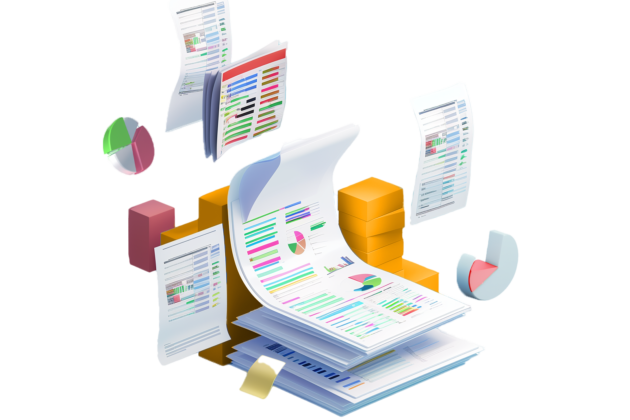- Why Accord
- PricingWe don’t hide behind fancy sales teams before we tell you, our prices.
- Clients
See who we are working with and what they have to say about Accord.- Resources
The Ultimate Checklist for Choosing the Perfect Contract Management System

Are you tired of sifting through endless options for a contract management system? Do you feel like you need a degree in rocket science just to understand the jargon? Fear not, my friend! We’re here to guide you through the process with some helpful tips. Whether your goal is a new contract management system or you simply want to improve your existing one, there are some key actions for you to complete:
1. Put together a cross-functional and cross-cultural team.First things first, assembling a team to tackle this task is crucial. But don’t just grab any old Joe Blogs from accounting. You need a cross-functional and cross-cultural team to represent the diverse perspectives of your organization. Think of it like the Avengers, but instead of saving the world, you’re saving your contracts. A cross-functional and cross-cultural team should include members from across departments (e.g., legal, IT, finance and procurement) and around the world who will be using the system on a regular basis. They’ll help make sure that the system meets everyone’s needs and makes sense for your company culture. In addition, it’s important that this group includes individuals who are familiar with specific terms and conditions that apply in certain industries or regions (e.g., banking or pharmaceuticals). With this in mind, do you need to consider solutions that offer a multi-user license and allow multiple users within your organization to access the contract management software platform using their own user accounts at one time? This can be especially useful if you have multiple departments or locations where employees need access.
2. Get feedback from end users
Next up, gather feedback from the end users. These are the folks who will be using the system on a daily basis, so their input is invaluable. It’s like getting a restaurant recommendation from a foodie friend instead of relying on Yelp reviews from strangers.
Ask questions like: What do they like and dislike? What are their pain points? How can you improve upon the current system so that it meets their needs?
By gathering feedback from end users, you can identify their pain points, needs, and preferences. This can help you choose a system that is intuitive and easy to use, which can increase adoption rates and user satisfaction.
Some ways to gather feedback:- You can conduct surveys, hold focus groups, or conduct one-on-one interviews.
- Ask open-ended questions and encourage honest feedback.
- Involve end users in the system selection process by having them participate in demos and evaluations.
3. Know what you need, but do your homework first.
Now, let’s talk about knowing what you need. It’s important to have a clear understanding of your organization’s needs and goals, but don’t get too caught up in the technical jargon. It’s like trying to order a coffee at Starbucks or Costa. Just tell them what you want and they’ll figure out the rest.
The type of things you should consider:
- Identifying the specific features and functionality required
Ask yourself what you want from your new contract management system. Are you looking for something that will help automate processes? Or do you just need a place to store documents while they wait to be reviewed or signed? Think carefully about what’s important in your business and what capabilities will best serve those needs.
What kind of contracts do you need to manage? Are they short-term or long-term? Do you need to manage multiple types of contracts at once? Do you need to provide support for multiple languages? How many people will be using the system?
- Budget constraints
How much money do you want to spend on the system, and how much should it cost per user per month? What kind of functionality do you need out of your contract management system, and what features must it have in order for it to work well in your company’s environment?
- Timeline considerations.
How much time do you have for implementation and training?
Doing your homework and researching different options can help ensure that you choose a system that meets your needs and fits within your budget.While it’s important to know what outcomes you want to achieve and what problems you need to solve, remember: Don’t limit yourself to what you already know. Explore the market and uncover the possibilities. There might be an alternative approach you haven’t considered yet! Seek out systems with live demo environments to explore and evaluate your requirements.
4. Are you ready for Digital Transformation?Digital transformation is not just a buzzword, it’s the real deal! It involves people, processes, and technology – like juggling three balls at once. But fear not, because successfully managing all three will lead you to a victorious digital transformation journey.
When selecting a contract management system, it’s crucial to consider its impact on these elements. Will it require process changes? Additional employee training? How will it integrate with other systems and technologies?
People, including employees, customers, and stakeholders, play a vital role. Foster a culture that embraces change and innovation, and provide comprehensive training and support to employees using the contract management system. This way, they can fully everage its benefits.
Streamlining processes and eliminating inefficiencies is key to maximizing the benefits of new technologies. Start by assessing your current contract management practices. Identify existing processes, systems, and tools, and address any pain points or inefficiencies. Then, design the future state of contract management by defining new processes, systems, and tools, as well as changes to roles and responsibilities, workflows, and governance. Plan the implementation process (data migration, training etc) and ensure you’ve got a way to monitor performance and make improvements to the system and processes.
The technology involved in digital transformation includes using the right hardware, software, and infrastructure to revolutionize the way you work. Choose technology solutions that align with your goals and needs. Employees should seamlessly be able to use their existing software tools and skillset, saving time and effort. Plus, the system should be scalable to ensure that your organization can handle growth without any slowdowns or crashes.
Remember, these elements are interconnected and must collaborate for a triumphant digital transformation.
5. Be realistic about your budget expectations
Budget expectations can be a real downer, but don’t let that discourage you. Think of it like shopping for a car. You may not be able to afford a Lamborghini, but a reliable Honda will get you where you need to go.
Implementing a new contract management system can be a significant investment. It’s important to be realistic about your budget expectations and to consider the long-term costs associated with the system. This includes not only the initial implementation costs but also ongoing maintenance and support.
To help manage costs, you can consider cloud-based solutions, which often have lower upfront costs and can be more scalable. You can also negotiate pricing with vendors and consider bundling services to save money. It’s important to have a clear understanding of your budget constraints and to communicate them to vendors early in the process.6.Don’t be sold on the sales pitch alone.
Last but not least, don’t be sold on the sales pitch alone. It’s like going on a first date and only hearing the good stuff. Do your research, ask questions, and get to know the system beyond the surface level.
When evaluating contract management systems, it’s important to look beyond the sales pitch and marketing materials. While these can be helpful in understanding the system’s features and benefits, they may not provide a complete picture of the system’s strengths and weaknesses.
Take the time to ask questions, request demos, and speak with current customers to get a better understanding of the system’s strengths and weaknesses. This can help you see the system in action and get a sense of how it works in real-world scenarios. You can also ask vendors specific questions about the system’s functionality, customization options, and integration capabilities. It’s important to approach the evaluation process with a critical eye and to ask questions that are specific to your organization’s needs. By doing so, you can make a more informed decision and choose a system that meets your organization’s needs and helps drive success.Final thoughts…
With the right team, by gathering feedback from end users, addressing the three cornerstones of digital transformation, doing your homework, being realistic about your budget expectations and looking beyond the sales pitch, you can choose a system that meets your organization’s needs and helps drive success.
In conclusion, choosing a contract management system can be daunting, but with a little bit of humor and some helpful tips, you’ll be well on your way to finding the perfect fit for your organization. So, grab a cup of coffee, assemble your team of Avengers, and get started!
Did you know that Accord can help?
Get in touch with Accord’s team today and they will:
- Listen to your business challenges
- Learn more about your current process.
- Guide you around the Accord system in a personalised walk-through.
- Help you identify how Accord can fit your organisation and help meet your needs.
- Send you login details to access a live demo system so you can explore yourself!
Book a demoMore reasons to use Accord
It’s easy to get started.
Step 1
Book a demo of Accord with the team.
Step 2
We’ll chat through your requirements and see if Accord is right for you.
Step 3
We’ll send you demo access and our onboarding kit to help you decide what you need.
Step 4
You decide if we’re right for you. No pushy sales calls.
Step 5
Like what you see and hear? Let’s get you onboarded with Accord!
- Clients





